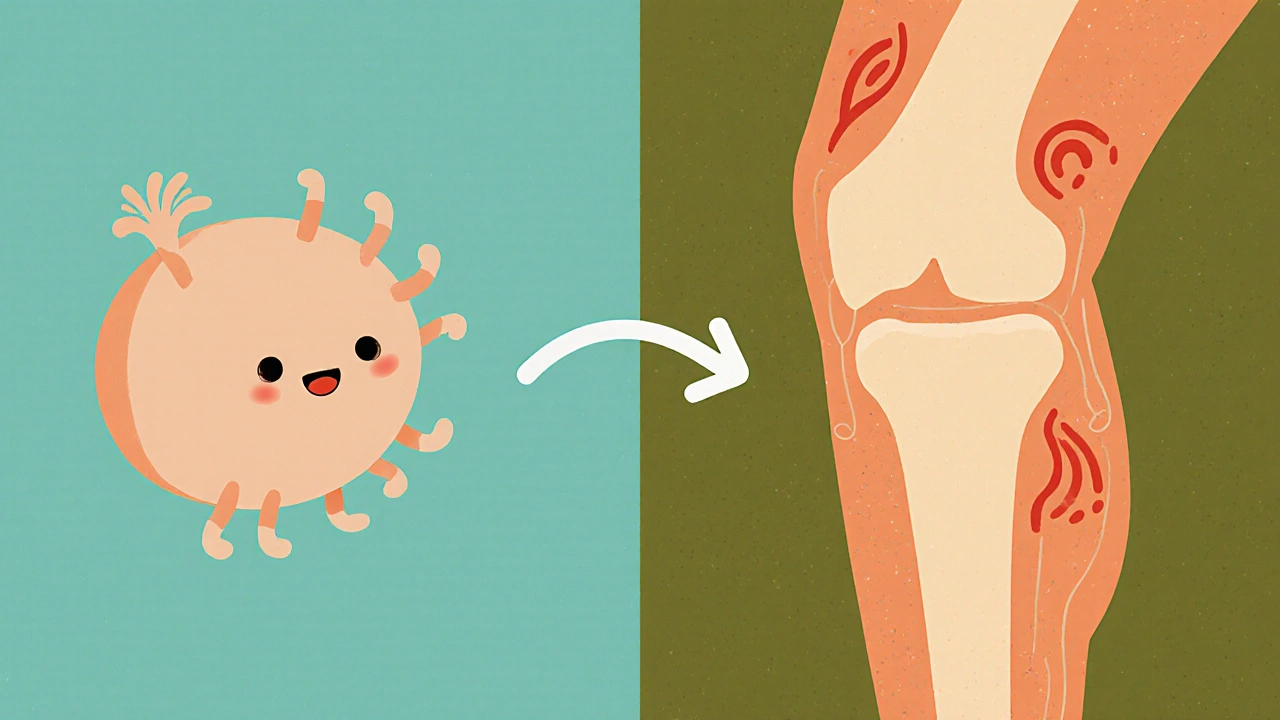Treatment for Reactive Arthritis
When you look for Treatment for Reactive Arthritis, a medical approach that reduces joint pain, swelling, and stiffness caused by an immune response to an infection. Also known as reactive arthritis therapy, it targets inflammation and helps restore joint function.
One of the first tools doctors reach for are NSAIDs, non‑steroidal anti‑inflammatory drugs that dull pain and curb swelling. They work by blocking prostaglandin production, which is a key driver of joint inflammation. If NSAIDs don’t bring relief, specialists may add DMARDs, disease‑modifying antirheumatic drugs that intervene in the immune system to prevent long‑term joint damage. Common choices include sulfasalazine and methotrexate, and they’re usually prescribed after an initial course of NSAIDs.
Key Components of Reactive Arthritis Care
Beyond medication, physical therapy, targeted exercises and manual techniques that improve range of motion and strengthen surrounding muscles, plays a big role. A therapist will design a program that eases stiffness without overloading inflamed joints. The underlying trigger—often a bacterial infection in the gut, urinary tract, or eyes—also needs attention. Treating the infection trigger, with appropriate antibiotics or supportive care, can halt the chain reaction that fuels joint pain. When the infection clears, the immune system usually calms down, making other treatments more effective.
These pieces fit together in a clear pattern: treatment for reactive arthritis encompasses medication, rehab, and infection control. The condition requires a multi‑layered plan because the immune response, joint inflammation, and lingering infection each influence the others. For example, NSAIDs reduce immediate pain, DMARDs protect the joint from chronic damage, and physical therapy ensures you keep moving while the drugs take effect. Meanwhile, clearing the infection removes the source that sparked the whole episode.
In practice, doctors start with a simple step—prescribe NSAIDs and advise rest. If symptoms persist beyond a few weeks, they move to DMARDs and refer you to a physical therapist. Simultaneously, they investigate recent infections through lab tests and treat any found bacteria. This staged approach balances quick relief with long‑term joint health.
Understanding how each element interacts helps you ask the right questions at the doctor's office. You might wonder which NSAID is safest for your stomach, whether a DMARD could affect future pregnancy plans, or how often you should see a therapist. You may also be curious about lifestyle tweaks—like staying hydrated, maintaining a balanced diet, and avoiding joint‑stressing activities—that complement medical care.
Below you’ll find a curated list of articles that dive deeper into each of these topics. From detailed NSAID comparisons to step‑by‑step physical therapy routines, the collection gives you practical tools to manage reactive arthritis effectively. Explore the guides, pick the strategies that fit your situation, and start turning the page on joint pain today.

Chlamydia and Reactive Arthritis: Understanding the Link
Explore how chlamydia infection can trigger reactive arthritis, covering symptoms, diagnosis, treatment, and prevention.
